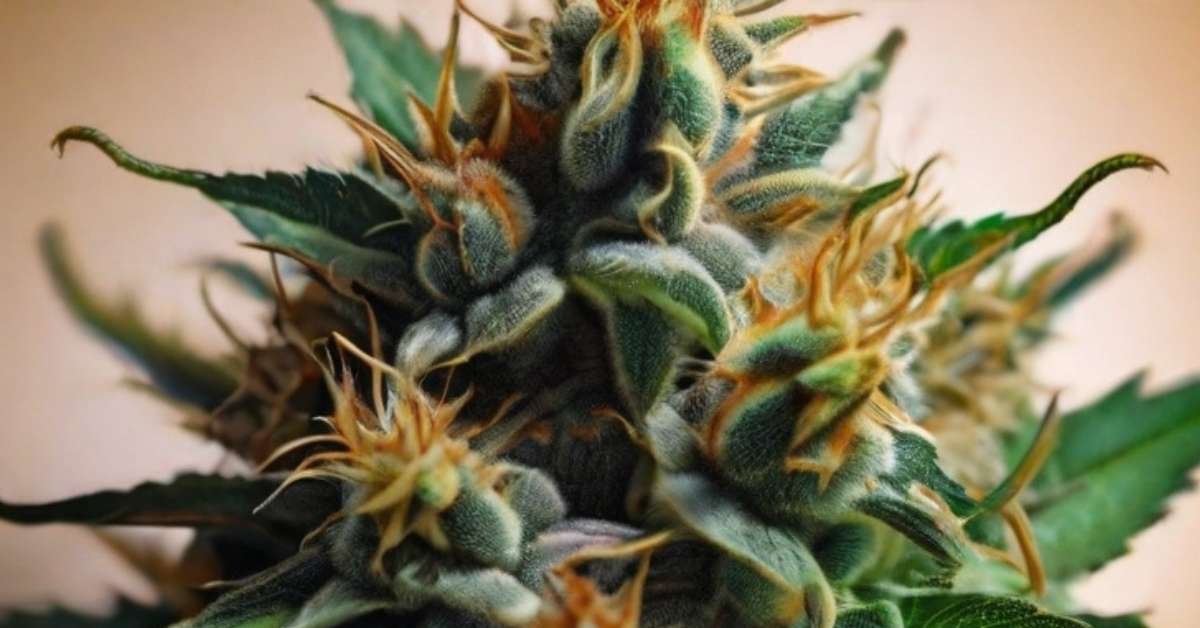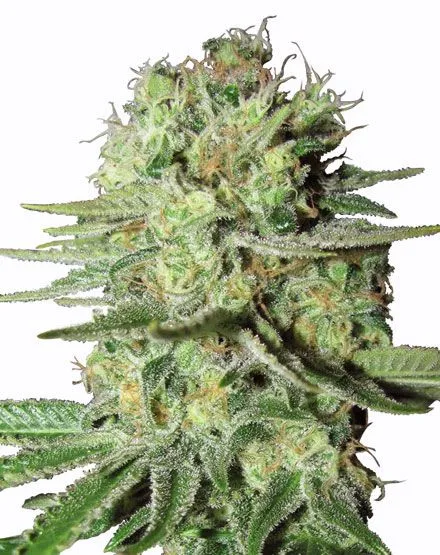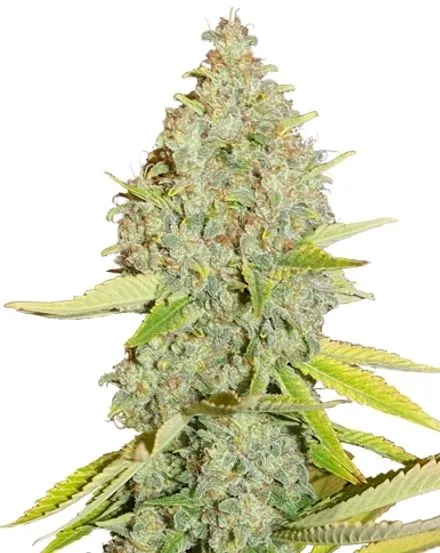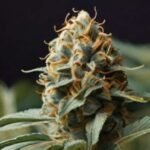Durban Poison cannabis seeds grow a high-quality strain known for its potency and flavorful profile, making them a popular choice within the cannabis industry.
Despite its name Durban Poison seeds are your ticket to a grower’s paradise, offering robust sativa genetics that you’ll find remarkably forgiving and rewarding.
As you cultivate these cannabis seeds, you’ll appreciate their South African heritage, which gives them tolerance to various climatic conditions. You’re looking at a pure landrace strain known for its high THC levels, typically around 20%, and its distinct, sweet aroma.
You’ll navigate a flowering cycle of 8-9 weeks, watching these plants reach for the sun with vigor, thanks to their sativa lineage. They’re suited for both indoor and outdoor setups, and they’ll flourish with minimal fuss, resistant to common pests and molds.
Durban Poison seeds deliver a clear-headed, energetic buzz, making them a favorite for daytime consumption among connoisseurs.
Table of Contents
Key Takeaways
- Durban Poison seeds come from a 100% pure sativa lineage
- Durban Poison is known for vigorous growth
- Harvest time is 8-9 weeks indoors
- Durban Poison can help manage chronic pain
South Africa Gives Rise to Durban Poison: Tracing the Strain’s Genetic Lineage
You’ll often find that Durban Poison seeds hail from a 100% pure sativa lineage, originally cultivated in the South African port city of Durban. This African strain boasts a robust genetic profile that can be attributed to its pure sativa heritage. As a landrace cannabis variety, the Durban Poison strain has adapted over generations to the local climatic conditions, contributing to its resilience and vigor.
Durban Poison Feminized Strain Information
| Strain Attribute | Details |
|---|---|
| Strength | High – Up to 24% THC |
| Genetics | Landrace |
| Seed Type | Regular, Feminized |
| Indica/Sativa | Pure Sativa |
| Yield | 500-600gr/m² |
| Height | Tall: 180cm-220cm |
| Flowering Time | 8-10 Weeks |
| Difficulty | Easy |
| Climate | Tropical, Sub Tropical, Warm, Arid, Mould Resistant |
Durban Poison Auto Strain Information
| Strain Attribute | Details |
|---|---|
| Strength | High – 20-24% THC |
| Genetics | Landrace Ruderalis |
| Seed Type | Autoflower Feminized |
| Indica/Sativa | Sativa Dominant Ruderalis |
| Yield | 400-500gr/m² |
| Height | Short: 60cm-100cm |
| Flowering Time | 8-10 Weeks |
| Difficulty | Easy |
| Climate | Tropical, Sub Tropical, Warm, Arid, Mould Resistant |
When cultivating Durban Poison seeds, you’re tapping into a rich history of sativa growth, characterized by a dense and slender plant structure. Its THC content can reach up to 20%, while the CBD content remains relatively low. This genetic makeup results in oversized resin glands, which are a hallmark of the strain’s high quality and potency.
How Growers Cultivate Durban Poison
Starting your Durban Poison seeds indoors requires careful attention to height control, as these plants are known for their vigorous vertical growth during flowering. To ensure a successful grow with this marijuana strain, consider these advanced techniques:
- Short Vegetative Phase: Initiate flowering earlier to manage the plant’s final height.
- Screen of Green (SCROG): Implement this method to spread the canopy and promote horizontal growth.
- Pruning: Remove lower growth to focus energy on the top colas, enhancing the plant’s yield.
- Hydroponics: Utilize this system for better nutrient control and potentially faster vegetative growth.
Durban Poison’s short flowering time can make growing this strain indoors easier, despite the need for diligent height management.
Durban Poison Plant Characteristics
Although Durban Poison is known for its vigorous growth, you’ll find its plant characteristics to be quite manageable with the right techniques. Durban Poison Feminized Seeds produce a pure sativa plant that’s renowned for its ease of cultivation, even for those new to indoor growing.
Durban Poison Strain Profile
| Durban Poison Attributes | Details |
|---|---|
| Terpene | Terpinolene, Myrcene, Ocimene |
| Taste | Spicy, Vanilla, Sweet |
| Effects | Uplifting |
| Medical | Depression, Pain, Stress |
However, due to its Sativa lineage, these plants can reach significant heights, demanding attention to height restrictions within your growing space.
To grow Durban Poison cannabis effectively, you’ll need to account for its tendency to stretch during its flowering period, which spans approximately 8-9 weeks indoors. By implementing appropriate training methods, you can harness its robust structure that supports long and heavy flowers, potentially yielding high grams per square meter of resinous Sativa blooms.
Harvesting Durban Poison
Prepare your shears and gloves, as harvesting Durban Poison offers a bounty of resinous Sativa blooms ripe for the taking in just 8-9 weeks indoors. When you cultivate Durban Poison seeds, you’ll find the harvest time is remarkably swift. To recognize when your crop is ready to harvest, observe the trichomes for a milky white appearance, a sign they’ve reached peak THC levels. If grown outdoors, aim to harvest your Durban Poison between September to early October, taking advantage of the plant’s great yield.
- Resin Production: Exceptional for concentrates, thanks to its sticky trichomes.
- Yield Metrics: Expect up to 500g per square meter indoors, or 700g per plant outdoors.
- Harvest Signals: Trichomes transition from clear to milky white.
- Seasonal Timing: Outdoor crops flourish for September-October harvests.
This energizing strain rewards with both quantity and quality, a true cultivator’s delight.
Therapeutic Effects
While you’ll be impressed by the abundant harvest of Durban Poison, you’ll also appreciate its therapeutic effects that can help you manage chronic pain and uplift your mood.
This pure landrace strain delivers a substantial dose of THC, which contributes to its efficacy in pain relief without the heavy sedative effects typical of indica strains.
As you explore the effects of Durban Poison, you’ll notice an immediate burst of energy, enhancing both energy and creativity—ideal for tackling tasks that require focus.
Its reputation as a mood enhancer is well-founded, effectively combating symptoms of stress and depression. Many users report that Durban Poison helps them relax while maintaining alertness, positioning it as a versatile choice for medicinal users seeking therapeutic effects without compromising functionality.
Frequently Asked Questions
How Hard Is It to Grow Durban Poison?
You’ll find growing this strain relatively easy due to its robust genetics. It’s well-suited for both indoor and outdoor setups, but you’ll need to manage its height and watch for stretching during flowering.
Why Is Durban Poison so Strong?
You’re experiencing Durban Poison’s strength due to its robust genetics, high resin output, and unique terpenes. Its uplifting effects are potent and long-lasting, becoming sedative in larger doses.
How Long Does It Take to Harvest Durban Poison Autoflower Seeds?
You’ll harvest your autoflower crop in approximately 8-9 weeks when grown indoors, or by early to mid-Autumn if you’re cultivating outdoors. Ensure timely height management for optimal yield.
How Much Does Durban Poison Stretch?
You’ll notice Durban Poison can stretch significantly, often doubling in height, so you must employ SCROG or similar techniques to manage its vigorous growth and ensure a controlled environment during the flowering stage.
Conclusion
You’ve learned that Durban Poison seeds boast robust genetics, making them a prime pick for both novice and seasoned cultivators.
With proper care, expect a bountiful harvest of resinous buds after 8-9 weeks of flowering.
These plants exhibit resilience against common threats, simplifying maintenance.
Their sativa-dominant effects can enhance creativity and energy, offering therapeutic benefits.
Invest in Durban Poison for a grow experience that’s as rewarding as the high-quality yield you’ll reap.







Leave a Reply
You must be logged in to post a comment.